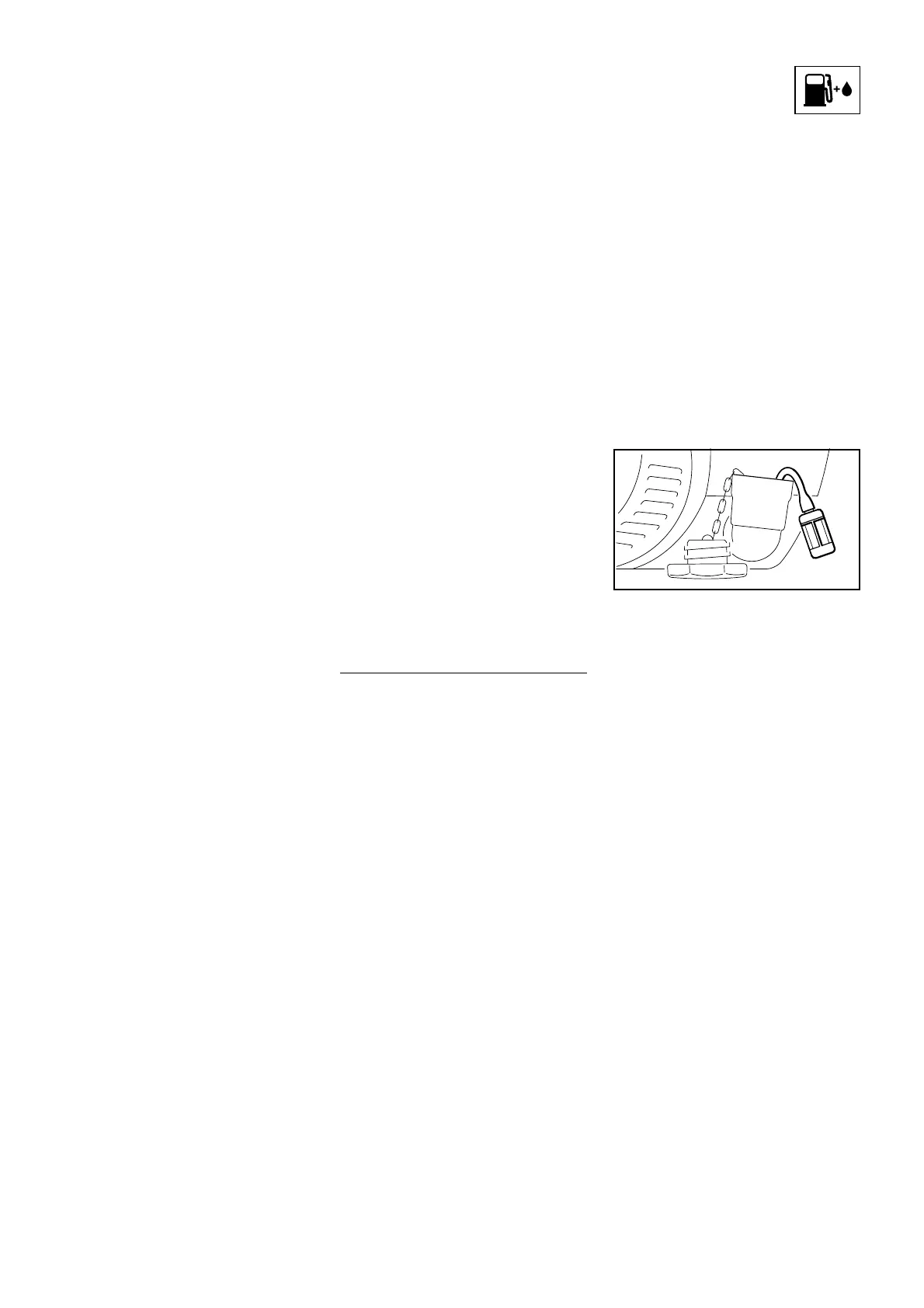)XHOPL[
This engine is certified to operate on
unleaded gasoline and with the
mix ratio 50:1.
Your two-stroke engine requires a
mixture of brand-name gasoline and
quality two-stroke engine oil with the clas-
sification TC.
Use regular branded unleaded gasoline
with a minimum octane rating of
90 RON (U.S.A./Canada: pump octane
min. 89!). If the octane number of the
regular grade gasoline in your area is
lower use premium unleaded fuel.
Fuel with a lower octane rating may
result in preignition (causing "pinging")
which is accompanied by an increase in
engine temperature. This, in turn,
increases the risk of the piston seizure
and damage to the engine.
The chemical composition of the fuel is
also important. Some fuel additives not
only detrimentally affect elastomers
(carburetor diaphragms, oil seals, fuel
lines etc.), but magnesium castings as
well. This could cause running problems
or even damage the engine. For this
reason it is essential that you use only
name branded fuels!
Use only STIHL two-stroke engine oil or
equivalent branded two-stroke air-
cooled engine oils with the classification
TC for mixing.
We recommend STIHL 50:1 two-stroke
engine oil since it is specially formulated
for use in STIHL engines.
Do not use BIA or TCW (two-stroke
water cooled) mix oils!
Take care when handling gasoline.
Avoid direct contact with the skin and
avoid inhaling fuel vapour.
The canister should be kept tightly
closed in order to avoid any moisture
getting into the mixture.
The fuel tank and the canister in which
fuel mix is stored should be cleaned
from time to time.
)XHOPL[DJHV
Only mix sufficient fuel for a few days
work, not to exceed 3 months of storage.
Store in approved safety fuel-canisters
only. When mixing, pour oil into the
canister first, and then add gasoline.
Gaso- Oil (STIHL 50:1 or
line equivalent branded TC oils)
US gal. US fl.oz
1 2.6
2 1/2 6.4
512.8
Dispose empty mixing-oil canisters only
at authorized disposal locations.
Before fueling, clean the filler cap
and the area around it to ensure that no
dirt falls into the tank.
Always thoroughly shake the mixture in
the canister before fueling your machine.
:DUQLQJ
In order to reduce the risk of burns or
other personal injury from escaping gas
vapor and fumes, remove the fuel filler
cap carefully so as to allow any pressure
build-up in the tank to release slowly.
:DUQLQJ
After fueling, tighten fuel cap
as securely as possible by hand.
)XHOLQJ
Change the fuel pick up body every year.
Before storing your machine for a long
period, drain and clean the fuel tank and
run engine until carburetor is dry.
004 KN
76

